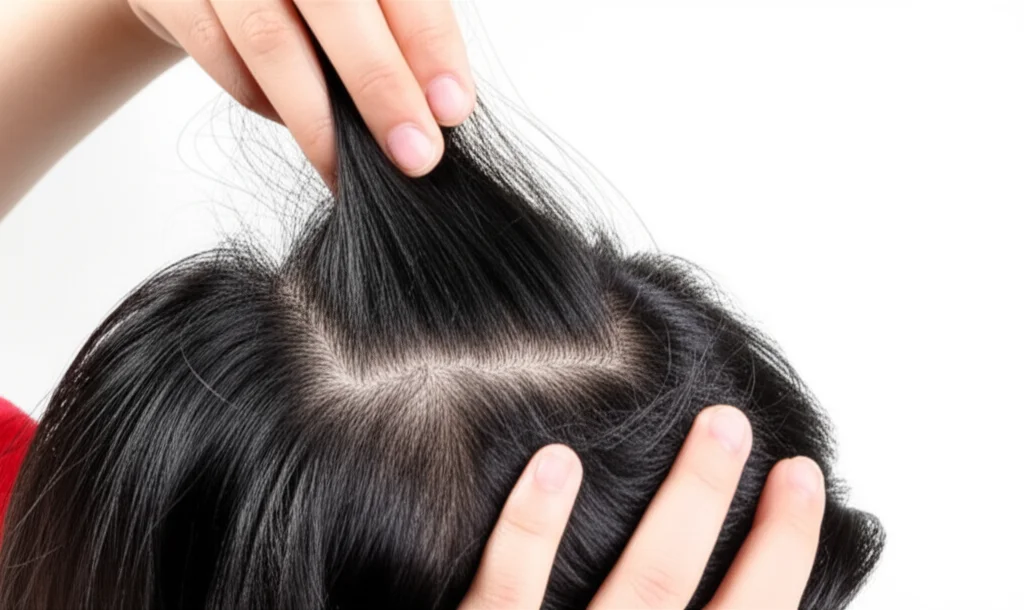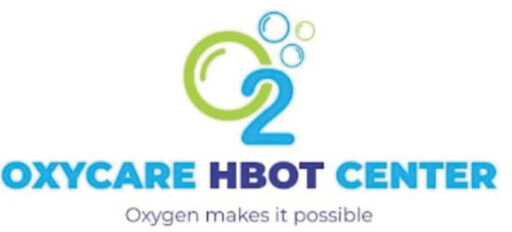
For millions, hair loss is more than a cosmetic concern; it’s a source of significant emotional distress. The search for effective solutions often leads down a path of topical treatments, medications, and invasive procedures with varying degrees of success. But what if the key to unlocking robust hair growth lay not on the surface, but in enhancing the body’s most fundamental resource: oxygen?
Enter Hyperbaric Oxygen Therapy (HBOT), a well-established medical treatment that is gaining remarkable traction in the world of dermatology and trichology. By supercharging the body’s natural healing processes at a cellular level, HBOT presents a compelling, non-invasive avenue for those battling hair thinning and loss.
This article will serve as your definitive guide, demystifying the science behind HBOT and its powerful application for revitalizing hair follicles and promoting healthier, stronger hair growth.
What is Hyperbaric Oxygen Therapy (HBOT)?
Hyperbaric Oxygen Therapy is a medical treatment that involves breathing pure oxygen (100%) in a pressurized environment, typically a specialized chamber. While the air we normally breathe is about 21% oxygen, HBOT allows your lungs to gather up to 15 times more oxygen than would be possible by breathing pure oxygen at normal air pressure.
The Two Main Types of HBOT Chambers
- Monoplace Chambers: Designed for a single person. The patient lies down on a padded table that slides into a clear, cylindrical tube made of acrylic.
- Multiplace Chambers: Larger chambers that can accommodate multiple patients and medical staff simultaneously. Oxygen is delivered via hoods or masks, and the chamber is pressurized with air.
This pressurized environment forces oxygen to dissolve directly into the bloodstream, plasma, and cerebrospinal fluid, flooding tissues and organs with an abundance of life-giving oxygen, even in areas with reduced blood flow.
The Science Behind HBOT and Hair Follicle Stimulation
To understand how HBOT aids hair growth, we must first understand the hair growth cycle and what follicles need to thrive.
The Hair Growth Cycle: A Brief Overview
Hair follicles are not constantly active; they cycle through three distinct phases:
- Anagen (Growth Phase): The active phase where cells in the root divide rapidly, forming new hair. This phase can last 2-7 years.
- Catagen (Transition Phase): A short, 2-3 week phase where growth stops and the outer root sheath shrinks.
- Telogen (Resting Phase): The follicle rests for about 3 months before the hair eventually sheds, and the cycle begins anew with the anagen phase.*
Hair loss often occurs when follicles prematurely enter the telogen phase or when the anagen phase shortens, producing finer, weaker hairs.
How HBOT Directly Influences Follicle Health
HBOT counteracts the factors that contribute to hair loss through several powerful physiological mechanisms:
1. Enhanced Oxygen Delivery and Angiogenesis
Dormant or miniaturized hair follicles often suffer from a compromised blood supply (ischemia). HBOT dramatically increases oxygen saturation in the scalp tissue. This oxygen-rich environment:
- Stem Cell Activation: Awakens and stimulates hair follicle stem cells in the “bulge” region, prompting them to enter the active growth (anagen) phase.
- Angiogenesis: Stimulates the formation of new capillary networks (angiogenesis) around the follicles. This improved vascularization ensures a sustained delivery of oxygen and nutrients long after the therapy session has ended.
2. Reduction of Inflammation
Chronic inflammation is a key driver in many types of hair loss, particularly alopecia areata and androgenetic alopecia. HBOT is a potent anti-inflammatory modality. It:
- Modulates the immune response, reducing the activity of inflammatory cells that can attack hair follicles.
- Decreases levels of pro-inflammatory cytokines, creating a more hospitable environment for growth.
3. Increased Collagen and Elastin Production
A healthy scalp matrix is crucial for strong follicle anchorage. The boosted oxygen levels from HBOT fuel fibroblasts, the cells responsible for producing collagen and elastin. This leads to a thicker, healthier dermal layer that provides superior support for hair roots.
4. Mobilization of Healing Cells
HBOT helps recruit the body’s own repair cells—endothelial progenitor cells (EPCs) and stem cells—to sites of need, including the scalp. This mobilization is crucial for repairing micro-damage and rejuvenating the follicular unit.
Primary Benefits of HBOT for Hair Conditions
HBOT’s mechanism of action makes it beneficial for a range of hair loss conditions.
Androgenetic Alopecia (Male and Female Pattern Baldness)
This genetic and hormonal condition causes follicles to miniaturize over time. HBOT can help by reversing the miniaturization process through improved blood flow, reduced follicular inflammation, and the activation of dormant stem cells, potentially leading to thicker, more terminal hairs.
Alopecia Areata
An autoimmune disorder where the body attacks its own hair follicles. HBOT’s powerful immunomodulatory and anti-inflammatory effects can help suppress this erroneous immune response, allowing follicles to recover and re-enter the growth phase.
Post-Procedural Recovery (e.g., Hair Transplants)
HBOT is a gold-standard adjunct therapy for accelerating healing after surgical procedures.
- Enhanced Graft Survival: Increases oxygen supply to transplanted grafts, reducing the risk of hypoxia-induced death and improving take rates.
- Faster Healing: Reduces post-operative edema (swelling) and accelerates wound healing at both the donor and recipient sites.
- Reduced Inflammation: Minimizes the inflammatory response that can sometimes impact graft success.*
Telogen Effluvium
This temporary hair shedding, often triggered by stress, illness, or surgery, pushes follicles into the resting phase. HBOT helps reverse this by mitigating stress on the cellular level and providing the energy needed to push follicles back into the growth phase.
What to Expect During an HBOT Session for Hair Loss
- Consultation: A medical professional will assess your suitability for HBOT, review your medical history, and discuss your hair loss goals.
- Preparation: You will be asked to wear 100% cotton gowns provided by the facility to avoid static electricity. All electronic devices, lighters, and petroleum-based products are prohibited.
- The Session: You will lie down or sit comfortably in the chamber. As the pressure increases, you will feel a sensation in your ears, similar to ascending in an airplane. This is easily relieved by yawning or swallowing.
- The Treatment: Once at the prescribed pressure, you will simply relax, breathe normally, and can watch TV, listen to music, or sleep for the duration of the session (typically 60-90 minutes).
- Decompression: The pressure is slowly decreased back to normal levels. The entire process is painless and non-invasive.
A typical treatment protocol for hair loss may involve multiple sessions, often 20-40, scheduled 5-6 days a week, to achieve cumulative and lasting results.
Combining HBOT with Other Hair Growth Treatments
For synergistic effects, HBOT is often combined with other modalities:
- Low-Level Laser Therapy (LLLT): Both therapies aim to stimulate cellular energy (ATP) production. Used together, they can significantly enhance follicular activation.
- Platelet-Rich Plasma (PRP) Therapy: HBOT can enhance the effects of PRP by improving the scalp environment, making it more receptive to the growth factors injected during PRP.
- Topical Treatments (Minoxidil) and Supplements: HBOT improves blood flow, which can enhance the delivery and efficacy of topical solutions and nutrients to the follicle.*
Frequently Asked Questions (FAQs)
Q1: Is HBOT for hair loss FDA-approved?
A: While the FDA has cleared HBOT for over a dozen medical conditions (like non-healing wounds and carbon monoxide poisoning), its use for hair loss is considered an “off-label” application. This is a common and legal practice in medicine when a treatment shows significant clinical promise for conditions beyond its initial approval.
Q2: How soon will I see results from HBOT for hair growth?
A: Hair growth is a slow process. Most patients begin to notice a reduction in shedding and improved hair texture within the first few weeks of treatment. Visible new growth typically becomes apparent after 2-3 months of consistent therapy, as this aligns with the natural hair growth cycle.
Q3: Are there any side effects or risks?
A: HBOT is very safe when administered by trained professionals. The most common side effect is barotrauma to the ears or sinuses due to pressure changes, which is usually manageable. A rare risk is oxygen toxicity. A medical screening is essential to ensure you are a good candidate.
Q4: How much does HBOT for hair loss cost?
A: Costs vary significantly by location and clinic but typically range from 250to250to450 per session. Since multiple sessions are required, the total investment can be substantial. Some medical insurance plans may cover HBOT if it’s deemed medically necessary for an approved condition, but not typically for cosmetic hair loss alone.
Q5: Will my hair loss return if I stop HBOT?
A: The regenerative effects of HBOT, particularly the formation of new blood vessels (angiogenesis), can have long-lasting benefits. However, if your hair loss is driven by an ongoing genetic or autoimmune condition, maintenance sessions may be recommended to sustain results, similar to how other treatments require ongoing use.
Q6: How does HBOT specifically help with hair growth?
A: HBOT increases the amount of oxygen dissolved in your blood, which is then delivered to all tissues, including the hair follicles on your scalp. This enhanced oxygen supply supports cellular repair, stimulates the formation of new blood vessels (angiogenesis) to improve circulation, reduces inflammation, and revitalizes dormant follicles, all crucial for healthy hair growth.
Q7: Is HBOT safe for everyone seeking hair growth?
A: While generally safe, HBOT has contraindications. It’s essential to have a thorough medical evaluation by a qualified professional to ensure it’s suitable for your specific health status. Conditions like untreated pneumothorax or certain severe lung issues can make HBOT unsafe.
Q8: What is the typical duration and frequency of HBOT sessions for hair growth?
A: A typical session lasts between 60 to 90 minutes. The frequency and total number of sessions vary greatly depending on the individual’s condition and response. A treatment plan might involve multiple sessions per week over several weeks or months, as determined by your healthcare provider.
Q9: When can I expect to see results from HBOT for hair growth?
A: Results can vary. Some individuals may notice improvements in hair thickness or reduced shedding within a few weeks, while more significant hair regrowth and increased density might take several months of consistent treatment. Patience and adherence to the prescribed treatment plan are important.
Q10: Can HBOT be used alongside other hair loss treatments?
A: Yes, HBOT can often be used in conjunction with other hair growth treatments like topical solutions or oral medications. However, it’s crucial to discuss this with your healthcare provider to ensure the combination is safe and optimal for your treatment plan.
Conclusion: Breathing New Life into Hair Follicles
Hyperbaric Oxygen Therapy represents a paradigm shift in the approach to hair restoration. It moves beyond surface-level treatments to address the fundamental cellular issues at the root of hair loss: oxygen deprivation, inflammation, and poor nutrient delivery. By harnessing the body’s innate healing power and supercharging it with pure, pressurized oxygen, HBOT offers a safe, non-invasive, and scientifically-grounded pathway to not only halt hair loss but to actively encourage regrowth.
While it requires a commitment of time and resources, the potential for significant, lasting improvement makes it a compelling option for those who have not found success with conventional methods. If you are exploring advanced solutions for hair restoration, a consultation with a certified HBOT provider could be the first step toward unlocking your hair’s full potential.








Leave a Reply